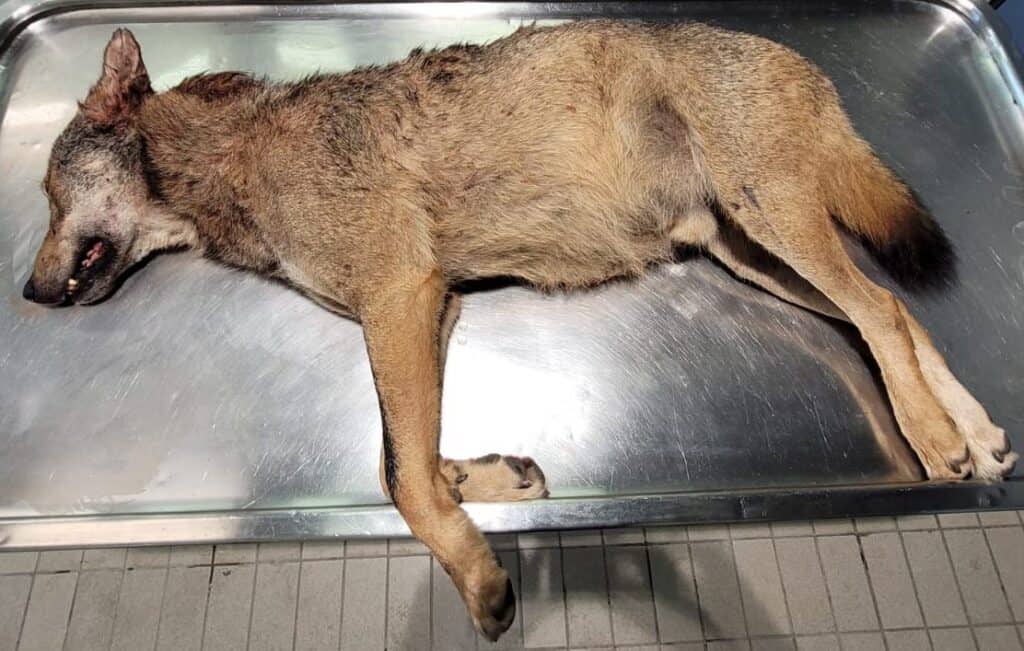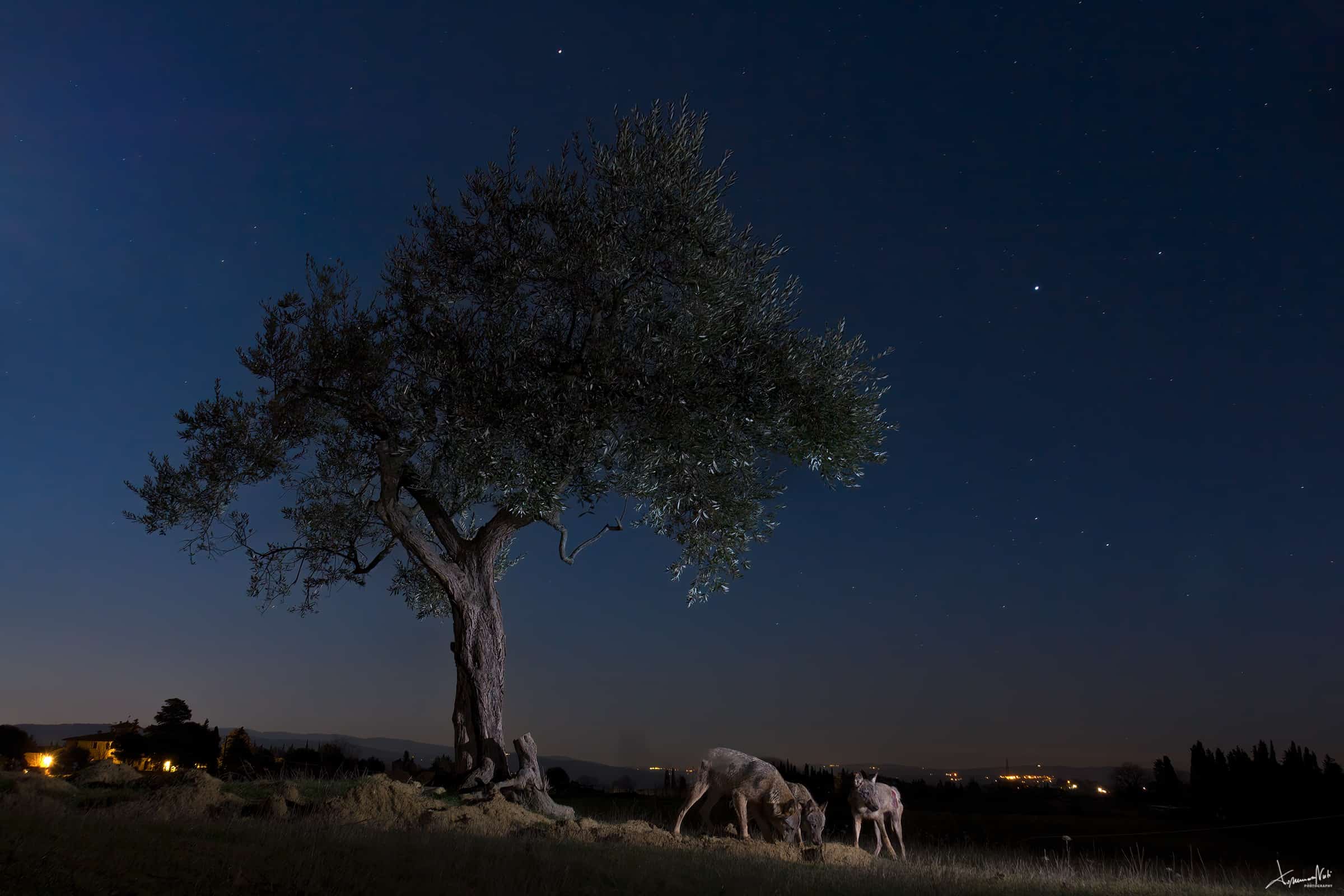Share this article
Rodenticides widespread in Italian wolf carcasses
Animals near cities had higher quantities of the pest-killing chemicals
Anticoagulant rodenticides are pervasive in the carcasses of dead wolves analyzed by researchers in central and northern Italy.
The ubiquitous presence of these chemicals widely used for rodent control is unique among large carnivores in Europe, say the researchers of a recent study published in Science of the Total Environment.
“This is an emerging threat to large carnivores in anthropogenic landscapes,” said Jacopo Cerri, a postdoctoral researcher in veterinary medicine at the University of Sassari and a coauthor of the study.
Gray wolves (Canis lupus) have been recolonizing many parts of Europe in recent decades, since human persecution has gradually decreased. But as these canids move closer to cities in Europe, some populations are facing novel threats that biologists don’t quite understand.
Cerri’s colleague Carmela Musto, a veterinarian at the University of Bologna and first author of the study and colleagues from the Istituto Zooprofilattico Sperimentale della Lombardia e Dell’Emilia Romagna (IZSLER)—a governmental zoological institution—had been conducting necropsies on wolves found dead in different regions of Italy, including northern Tuscany, Lombardi and Emilia-Romagna, from 2018 to 2022. They found a high number of anticoagulant rodenticides in these carcasses, and they decided to run a more in-depth analysis on trends associated with these chemicals.
Out of the 186 dead wolves the team tested for these chemicals, they found 115, or 61.8%, tested positive for at least one anticoagulant rodenticide.
Rodent diet for city wolves?
The amount of exposure to these chemicals, they found, was higher in wolves found dead closer to cities or other areas of higher human use compared to those with less human use.
“Probably, this indicates that there are systematic differences between wolf diets in different areas,” Cerri said.
This discovery is important as it goes against the common assumption that wolves typically prey on ungulates like wild boar (Sus scrofa) or deer.
The quantity of rodenticides in these wolves isn’t as high as in species like common buzzards (Buteo buteo), which tested positive in 78.3% of cases, or red foxes (Vulpes vulpes), which tested positive in 89.6% of cases. These species rely predominantly on a rodent diet. But the fact that so many wolves near cities have higher levels of rodenticides may mean they are preying on or scavenging species like rats or invasive nutria (Myocastor coypus).

These results suggest that the use of rodenticides to home in on the target vermin species isn’t as selective as some may believe, since non-target species are consuming these chemicals.
Some 79 of these wolves tested positive for two or more rodenticides—some had as many as four or five kinds of the chemicals. Cerri said this is likely a reflection of the fact that some people mix different compounds thinking that doing so will better kill rats and other vermin.
Cause for concern
It’s difficult to tell if rodenticides killed any of these wolves directly. But even if the chemicals probably aren’t leading to acute poisoning, it’s likely that they affect the wolves in other ways that may lower their survival in the wild, Cerri said.
Cerri pointed to the example of bobcats (Lynx rufus) in North America—some research has shown that rodenticides likely compromise their immune systems, for example. “I think contamination from toxic chemicals might be more widespread than we think,” Cerri said.
While this study was conducted in Italy, Cerri said that wolves that live near large cities in other countries like France and Germany may also be ingesting anticoagulant rodenticides.
The discovery is important as it highlights a potential limiting factor on wolf populations. Cerri said that wildlife managers will need to consider the effects of potential poisoning when deciding in the future whether to take conservation measures like an endangered listing, for example.
“[Wolves] might have some silent threats that we need to account for,” Cerri said.
Header Image: Wolves feed around a country house in Italy. Credit: Tommaso Nuti








